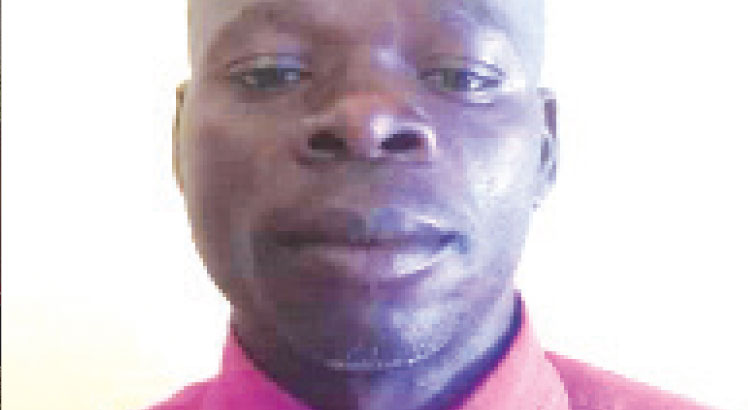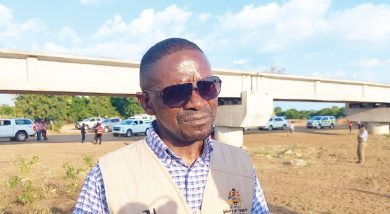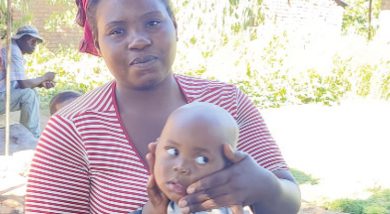Experts caution on roadside deliveries
Ellen Mdandu, from Katutula Village, Traditional Authority (T/A) Mkanda in Mchinji District, feels humiliated and embarrassed to have delivered a baby on the banks of Luwelezi River in the presence of even children.
Her labour pains started at dawn on May 1 2023.
“It started so small, but rapidly progressed as the day broke. And, by 8am, I was in unbearable pains and I asked my husband and some relations to take me to the hospital.
“We reached the riverbank around 9am, but I could not walk on the two wooden poles placed across the river,” explains Mdandu.
She says her husband and some well-wishers tried to help her, but it was too late.
The 25-year-old mother was due for delivery.

“My legs could not hold. So, I sat down, twisting in pains, as blood started oozing out because the baby was ready to come out,” Mdandu narrates her experience.
Some women carried her to a nearby bush since a small crowd started gathering to witness the scene, being a market day at Mkanda Trading Centre.
Twenty-two-year-old Violet Chionetsero, from Chindukuwa Village, was not so lucky as she had no one to help her deliver her baby on January 5 2023.
Unlike Mdandu, her labour started at night.
By 10pm, she and her husband were at the bridge, failing to cross.
Chionetsero explains: “I had no one to help me deliver and my husband was clueless, just watching helplessly as I writhed in excruciating pain on the riverbank.
“By God’s grace, I managed to deliver without help. Of course, I suffered an injury on my leg and up to date I cannot walk properly,” she says.
Mesiya Paulo, from Chilambula Village, shared a similar story.
The 23-year-old mother also delivered her baby on the riverbank on the night of January 2 after she failed to cross the bridge.
Three women have delivered babies on the riverbank this year alone while last year, two babies were delivered.
Ironically, Mkanda Health Centre is just a five-minute walking distance from the riverbank.
The bridge connects Chisamba, Chilambula, Mgonakuti, Chigoneka and several other villages to the health facility, main market, agriculture office, police unit, primary and secondary schools, and several other essential services.
Mdandu has one request to President Lazarus Chakwera: “Give us a bridge on Luwelezi River. What happened to me should not be allowed to happen to any woman in the process of giving birth.
“It is heartbreaking, humiliating and an insult to the dignity and modesty of a woman.”
These scenarios are not perculiar to Mchinji as they also happen across the country.
At Chididi in Nsanje, Chihanga in Rumphi and several other districts, women deliver on roads due to damaged road infrastructure and long distances to health facilities.
Chief Kabelubelu, from Traditional Authority Chikulamayembe in Rumphi District, says a bridge on Chitimba River was destroyed 10 years ago, but it has not been repaired.
“Expectant women struggle to reach Chitimba Health Centre because there is no bridge on the river,” he adds.
Heartbreaking
Health experts have since warned that the government’s efforts to fight maternal and neonatal deaths can be wasted if damaged roads and bridges leading to health facilities are not repaired.
Kamuzu University of Health Sciences professor of public health and epidemiology Adamson Muula describes the Mchinji situation as heartbreaking.
He explains: “Maternal health is a complex matter. Some mothers need Caesarean section to deliver babies; others blood transfusion soon after delivery.
“Some babies are born with breathing challenges. So, how do they receive such specialised services if we allow women to deliver on the riverbanks?”
Muula argues that more needs to be done to reduce further maternal and neonatal deaths in the country.
He says: “We often think we can reduce maternal and neonatal deaths by just building health facilities, but the Mchinji scenario has shown us that we also need to ensure that roads and bridges to such facilities are in good condition.
“Most of the roads and bridges that put lives of mothers and their babies at risk are not even under the Road Authority, but district councils because they are not primary roads.
“So, I urge the district councils to prioritise and ensure that roads leading to health facilities are repaired with the urgency they deserve. Otherwise, we may unnecessarily put lives of mothers and their babies at stake.”
A World Bank Transport Infrastructure Sector Assessment Programme report hints that Malawi may need $166 million (about K168 billion) every year to repair road infrastructure damaged by natural disasters such as floods.
Malawi Health Equity Network executive director George Jobe expresses disappointment at what happened in Mchinji.
He argues: “If we encourage women to deliver in health facilities, we should ensure that we have dealt with all social determinants that may hinder their access to health services.
“I would urge the authorities to deal with this matter expeditiously so that we do not pointlessly put lives of mothers and their babies at risk.”
With the frequency and the intensity of natural disasters, Jobe raises concern that access to health facilities has become problematic in many districts, especially in the Southern Region that is still reeling under the effects of the cyclones Ana, Gombe and Freddy which destroyed roads, bridges and even health facilities.
Health rights activist Maziko Matemba calls on government to ensure that expectant women deliver in health facilities.
“The Mkanda issue is regrettable because there are many benefits when women deliver in hospitals. As you know there is post antenatal care which is only offered in health facilities. In fact, some women deliver stillbirths who need special attention.”
Chief Chilambula and his counterparts Mgonakuti and Hezekiya from T/A Mkanda hope the Tonse Alliance administration would answer their petition to “build a simple bridge on the river”.
Mgonakuti pleads: “Our mothers are embarrassed on the riverbank in the processing of giving birth. We want government to give us a bridge to wipe away our shame.
“If government asks our mothers to deliver in hospitals it should remove all the stumbling blocks to accessing health services.”
Mkanda Health Centre Management Committee member Wisdom Mkandawire describes the “riverbank delivery suite” as an old age challenge which the authorities are reluctant to solve.
He mourns: “We have raised it on several occasions, but those in authority are not forthcoming.
“So, we advise expectant women to use the longer route that passes through the police unit when coming to the health centre to deliver their babies.”
But Mchinji District Council chairperson Denis Lazalo and Mcheni Ward councillor White Musha pledge to build a small concrete bridge on the river.
Musha says: “As a council, we agreed to build a small bridge which can only take pedestrians and cyclists. In the past, we had a big bridge on the river.
“But it created chaos because thieves and smugglers were using it to evade police checks. Some would steal property, including vehicles, in Malawi and sell them in Zambia and vice versa.”
Gains under threat
Health experts have cautioned that if this trend continues the gains the country has made over the years in fighting maternal and neonatal deaths would be eroded.
Malawi has one of the highest maternal death rate in the world at 436 per 100 000 live births, according to Malawi Demographic and Health Survey 2015.
Ministry of Health chief reproductive health officer Rosemary Bilesi was quoted in The Nation of March 23 2023 as having expressed frustration at the slow pace at which the country is reducing maternal deaths.
In 2000, for example, maternal deaths were 1 120 per 100 000 live births.
Bilesi’s observations came when Trends in Maternal Mortality 2000-2020 report was released which fell short of Sustainable Development Goal (SDG) target 3.1 of reducing the global maternal ratio to less than 70 maternal deaths per 100 000 live births by 2030.
But the Malawi Health Sector Strategic Pan III challenges the country to at least reduce the maternal mortality ratio to 213 per 100 000 live births by 2030.
A reflection on SDGs
With cases of mothers failing to deliver at the hospital, experts doubt if the country will achieve the United Nations SDG 3 target on health and wellness which, among other things, provide for universal health coverage and equitable access to health care services for all men and women.
In his presidential lecture at Baylor College of Medicine in the US, SDG professor Jeffrey Sachs urges governments and development partners to invest in the health sector as it holds keys to achieving national development agendas such as the Malawi Vision 2063 (MW20663).
He argues that sometimes investments needed to prevent deaths of babies and their mothers, especially in low resource countries such as Malawi, are “shockingly small amount of money”.
Partnership for Social Accountability (PSA) has been working with Mhen and the Parliamentary Committee on Health to advocate for increased funding for the health sector so that people access quality and affordable health services.
MDG 3 calls on governments and development partners to end preventable deaths of mothers, newborns, infants and children under the age of five and universal access to sexual and reproductive health care by 2030.
In his presentation at an outcome meeting in Dowa on April 19 2023, PSA project manager Wales Chigwenembe argued that most of these targets are achievable with increased funding to the health sector and effective monitoring of its use.
Seven years to the SDG deadline, Muula cast a shadow of doubt whether Malawi will achieve the targets with diseases and natural floods and cyclones that continue to batter and overwhelm the country’s health systems.
“The damage the cyclones induced floods have inflicted on infrastructure is too huge. District councils should rise to the occasion and prioritise their expenditure so that the gains we have made over the years in the fight against maternal and neonatal deaths are not eroded,” he said.





